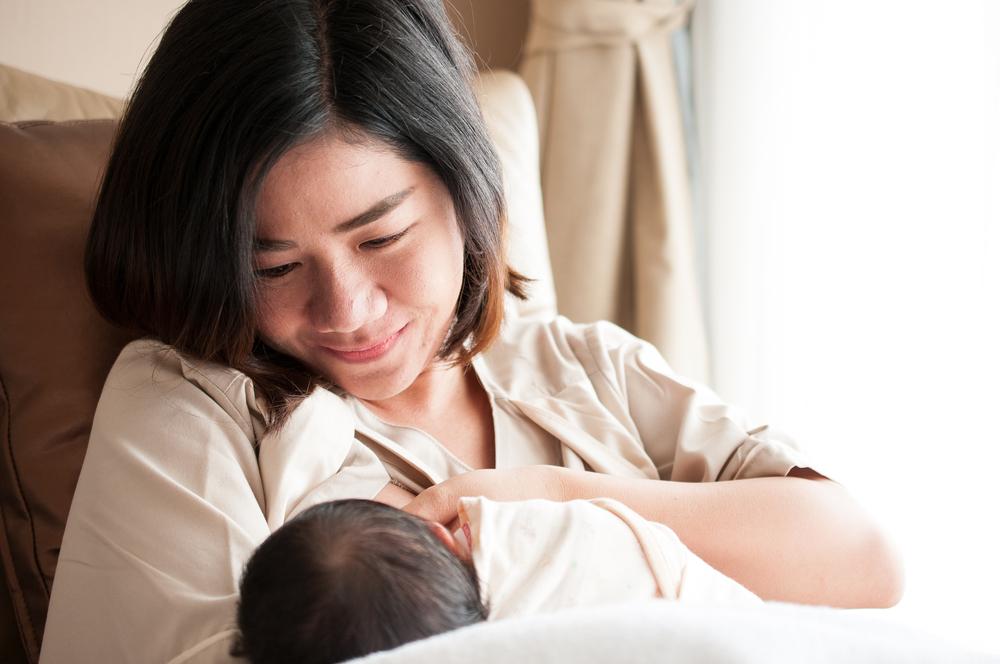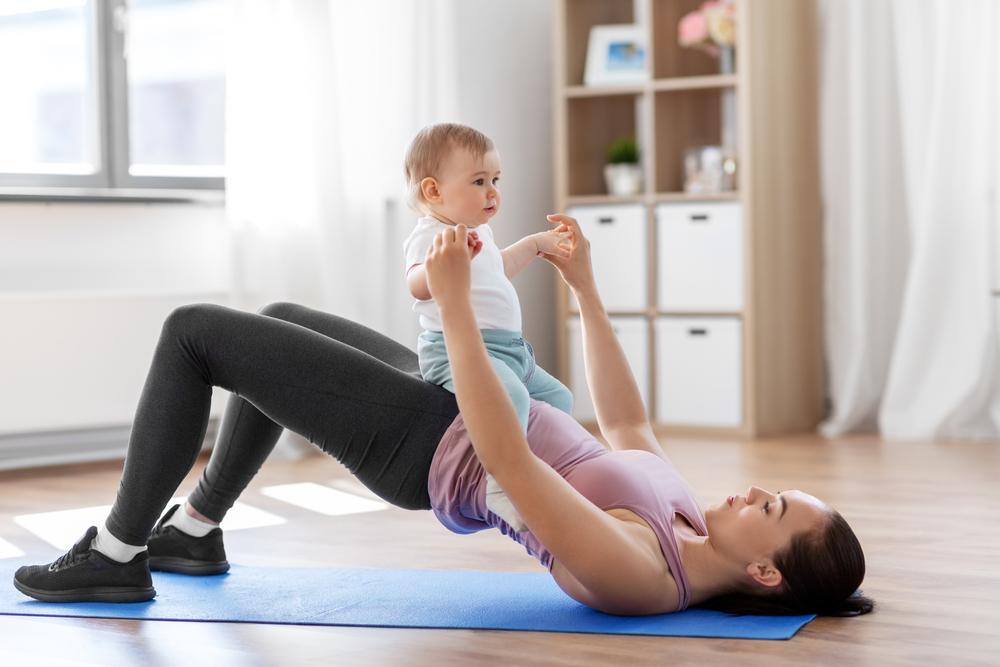Giving birth is a major event, and it takes your body a while to recover. Here are eight things you need to know about recovering after birth, from engorgement to pelvic floor exercises:
1. Get plenty of rest.
You’ve probably heard the advice “sleep when your baby sleeps,” and it’s true. You should get as much rest as you possibly can. Sleep is your body’s way of healing itself, and it definitely needs some healing after the event of giving birth. In the first couple of weeks, you might not be able to do anything beyond sleeping, eating, and care for your baby — and that’s totally okay! Infants are very demanding when they’re awake, and they don’t sleep through the night, which makes it tough to get the sleep you need. Do what you can and don’t be afraid to ask for help with household chores and other tasks.

Source: mrvirgin / Shutterstock.com
2. Pamper your breasts.
Whether you’re breastfeeding or not, your breasts will likely be tender and sore after birth as your milk comes in. If you’re not breastfeeding, don’t express the milk or pump, which will encourage your body to make more. Instead, wear a supportive sports bra and try to keep them as comfortable as possible while your milk dries up. If you are breastfeeding, regular feedings will help minimize engorgement. You can place hot or warm compresses on your breasts in between feedings to help ease swelling and pain. If your nipples become cracked or sore from feeding, a nipple cream will help keep the skin moisturized and promote healing.
3. Take care of the delivery site.
If you delivered vaginally, you’ll be rather sore down there, and you might have experienced some tearing as well. Sitting on a pillow or a padded ring can help cushion the area, and periodically cooling the area with ice packs can help as well. Using a squeeze bottle to pour warm water over the perineum while urinating will also ease discomfort. Sitting in a warm or cold sitz bath (a bath just deep enough to cover your hips and bottom) for five to 10 minutes can also soothe the area. For a C-section, change the dressing at least once a day, and whenever it gets dirty or wet. Wash the area with mild soap and water to keep it clean. Don’t scrub the area or soak in water, as this can loosen the stitches.

Source: goffkein.pro / Shutterstock.com
4. Manage your cramps and pain.
It’s normal to feel uncomfortable and even have some aches and pains after giving birth. Over-the-counter pain relievers can help soreness and inflammation in the breasts, pelvis, and stomach. You can also ask your doctor for a numbing cream if you want topical relief. It’s normal to feel afterpains the first couple of days after delivery as your vagina shrinks in size. These will feel similar to menstrual cramps. It’s also normal to experience some bleeding and discharge similar to a heavy period flow. If you’re going through more than one pad an hour or notice really big clots, call your doctor in case it’s a postpartum hemorrhage.
5. Make using the bathroom as easy as possible.
Eating frequent but small meals a day can help cut down on discomfort and contribute to regular bowel movements. Postpartum, you don’t want to bear down too much when you have to go to the bathroom, so eat lots of fiber to keep yourself regular. You should also drink plenty of water, which will make it easier to urinate and help stools remain soft and easy to pass. If you still can’t go to the bathroom without pain, ask your doctor about getting a laxative or stool softener. When it comes to urination, it’s normal to leak a little bit of urine right after birth when you cough or sneeze. In the short-term, wearing incontinence pads will help catch the leakage. Most incontinence goes away as your muscles heal up.
6. Check-in with your mental health.
Most women experience the “baby blues,” or a period of mood swings and negative emotions, in the two weeks following birth. The baby blues are triggered by the big hormonal changes that your body goes through post-birth. In some women, the feelings persist beyond two weeks and become postpartum depression, a more chronic condition that can lead to difficulty bonding with or caring for your baby and even thoughts of suicide or self-harm. If you believe that you’re experiencing postpartum depression, talk to your doctor about possible treatment options, which include talk therapy and medication.

Source: Syda Productions / Shutterstock.com
7. Try pelvic floor therapy.
Whether you gave birth vaginally or via C-section, your vagina expands during delivery in order to accommodate the baby. The stress of carrying a baby and giving birth also stretches out your pelvic floor muscles, which weakens the whole area. Pelvic floor exercises such as Kegels can help strengthen the whole area and tighten the vagina post-birth. If you have trouble identifying the pelvic muscles, using a Kegel ball (once your doctor has cleared you for insertion) can help a lot. Make sure to look up how to do pelvic tilts and Kegels so you don’t accidentally contract your ab muscles instead. Doing it wrong won’t help strengthen your pelvic floor.
8. Exercise gently when you can.
Depending on how you delivered and how traumatic the birth was, your doctor might have you rest for several weeks or longer. Eventually, you will get the green light to ease into physical activity. Don’t try to replicate your intense pre-pregnancy workouts right away. Instead, transition into exercise with gentle physical activities such as walking and light stretches. These will get your blood flowing and help boost your mood, not to mention that walking provides a much-needed change of scenery. Your doctor will let you know how and when to move onto more intense exercise.
Your body will recover after giving birth, but it might need some help. Follow these eight tips to promote postpartum healing and recovery.
